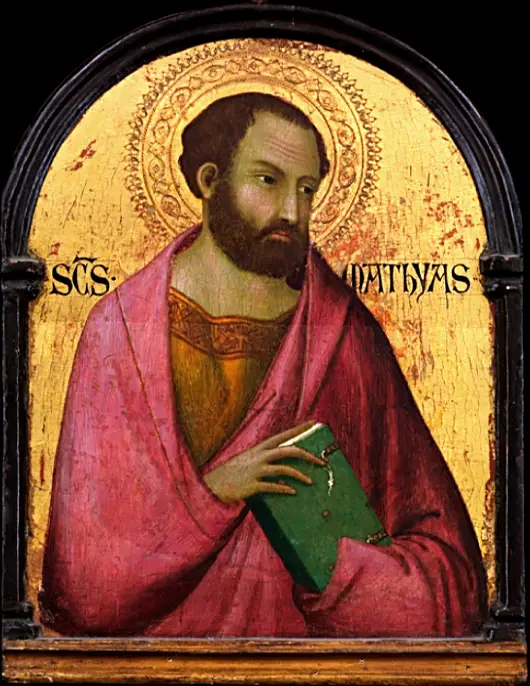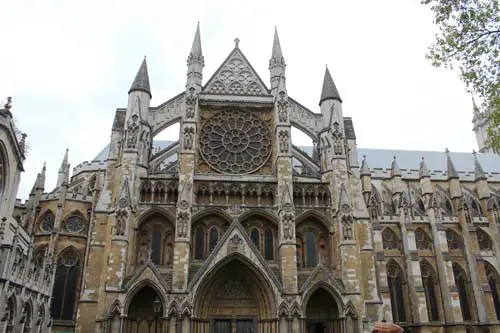Lord Chamberlain
The head of the Chamber was known as the Lord Chamberlain and this position was appointed by the King. The Lord Chamberlain was responsible for every person that worked in the King's chambers. The chambers were comprised of two sections: the Privy Chambers, which were the King's personal chambers, where Henry VIII slept, ate and retired for entertainment or study; and the Great Chambers, which consisted of the outer rooms where the King may meet with dignitaries or rooms such as the Great Hall.
The Privy Chamber and the Great Chamber at times comprised of around four hundred people, all of which the Lord Chamberlain was responsible for. There were people such as gentlemen, grooms, esquires, cupbearers, doctors, ushers, pages and members of the King's Wardrobe which were all responsible for fulfilling the King's daily needs.
The Lord Chamberlain held an extremely important position, both in terms of his duty and his relationship with the King. The position afforded the holder the ability to speak frequently with the King, often in a personal setting away from other prying ears, as well as taking an active role in Privy Council meetings and Parliament. It is unsurprising then that many people sought favour with the Lord Chamberlain in the hope that he would pass their concerns or pleas on to the King. The Lord Chamberlain was also responsible for appointing positions within the Chambers and thus many people would seek the Lord Chamberlain's favour in the hope of having their son or male family member appointed to serve the King.
The Lord Chamberlain was also responsible for official court ceremonies and was assisted by the Vice-Chamberlain. The Lord Chamberlain was, of course, paid well by the King, in addition to the ‘incentives’ he may receive from others seeking posts or favours.
During the reign of Henry VIII the position of Lord Chamberlain was held by:
- Charles Somerset, Earl of Worcester - from 1509 to 1526.
- William Fitzalan, Earl of Arundel - from 1526 to 1530.
- William Sandys, Baron Sandys - from 1530 to 1540.
- William Paulet, Baron St John - from 1543 to 1545.
- Henry Fitzalan, Earl of Arundel - from 1546 to 1550.
Lord Steward
The appointment of Lord Steward was granted by the King. The holder of the office was responsible for the household of the court below stairs, including such things as the running of the kitchens, the provision of fuel for the household, drinks and other domestic responsibilities, as well as overseeing the maintenance of the grounds and gardens of the household. Overall, the Lord Steward was responsible for around twenty-five departments which comprised of around five hundred people.
The Lord Steward was also responsible for felonies or offences committed by the King's servants, including treason, murder or the shedding of blood.
The Lord Steward was also the head of the Board of Green Cloth, so named as a deep green cloth covered the table that the Lord Steward and other members of the Board sat. Other members of the Board of Green Cloth included the Treasurer, the Comptroller and the Master of the Coffer. The Treasurer and the Comptroller were directly answerable to the Lord Steward.
The Board of the Green Cloth was responsible for the daily expenditure of the household, to ensure that payments were made to servants and other members of the household, as well as to generally oversee the servants of the household. The board met twice a week and as the head of the Board of Green Cloth the Lord Steward was ultimately responsible for all of the finances below stairs.
During the reign of Henry VIII the position of Lord Steward was held by:
- George Talbot, Earl of Shrewsbury - from 1502 to 1538.
- Charles Brandon, Duke of Suffolk - from 1539 to 1545.
- Wiiliam Paulet, Baron St John - from 1545 to 1551.
Master of the Horse
The Master of the Horse was the third of the Great Officers of the Royal Household. As with the Lord Chamberlain and the Lord Steward, the position of Master of the Horse was appointed by the King.
As the name suggests, the Master of the Horse was in charge of all of the King's horses. The Master of the Horse was also responsible for the King's stables, providing the King with horses when the King went to war, mews (houses that were made from old stables or living rooms above the stables), all racing involving horses, and the horses the King used for hunting and litters. The Master of the Horse was responsible for all those that worked or held positions in the stables. Interestingly, the Master of the Horse was also responsible for the King's hunting dogs as well as the Toyles, the department involved with maintaining the King's falcons at the Royal Mews.
The Master of the Horse held a position on the Privy Council and was often close to the King due to Henry VIII's great fondness for hunting and jousting.
During the reign of Henry VIII the position of Master of the Horse was held by:- Sir Thomas Brandon - from 1485 to 1510.
- Sir Thomas Knyvet - from 1510 to 1512.
- Sir Charles Brandon - from 1513 to 1515.
- Sir Henry Guildford -from 1515 to 1522.
- Sir Nicholas Carew - from 1522 to 1539.
- Sir Anthony Browne - from 1539 to 1548.
As the Great Officers of the Household, the Lord Chamberlain, the Lord Steward and the Master of the Horse were entitled to carry white sticks. These white sticks signified the position was appointed directly by the King and that the holder's authority came from the King. The other offices allowed to carry a white stick of office were the Vice Chamberlain, the Treasurer and the Comptroller who were directly responsible to the Lord Steward.
Sarah Bryson is the author of Mary Boleyn: In a Nutshell. She is a researcher, writer and educator who has a Bachelor of Early Childhood Education with Honours and currently works with children with disabilities. Sarah is passionate about Tudor history and has a deep interest in Mary Boleyn, Anne Boleyn, the reign of Henry VIII and the people of his court. Visiting England in 2009 furthered her passion and when she returned home she started a website, queentohistory.com, and Facebook page about Tudor history. Sarah lives in Australia, enjoys reading, writing, Tudor costume enactment and wishes to return to England one day. She is currently working on a biography of Charles Brandon, Duke of Suffolk.
Sources
- Department of the Master of the Horse, or Stables, British History Online, viewed January 2016, http://www.british-history.ac.uk/office-holders/vol11/pp603-604.
- Gosman, M, MacDonald, A & VanderJagt, A (2005) Princes and Princely Culture: 1450-1650, Volume Two, Brill, The Netherlands.
- House of Lords Precedence Act 153, Legislation, The National Archives, viewed 19 January 2016, http://www.legislation.gov.uk/aep/Hen8/31/10.
- Master of the Horse UK, Geni, viewed 19 January 2016, https://www.geni.com/projects/Master-of-the-Horse-UK/31008.
- Records of the Lord Steward, the Board of Green Cloth and other officers of the Royal Household, The National Archives, viewed 19 January 2016, http://discovery.nationalarchives.gov.uk/details/r/C202.
- Weir, Alison (2008) Henry VIII: King & Court, Vintage, London.





Hi
William FitzAlan is a one of my FfitzAlan Allen ancestors.